Are you what you eat?
Alkaline food
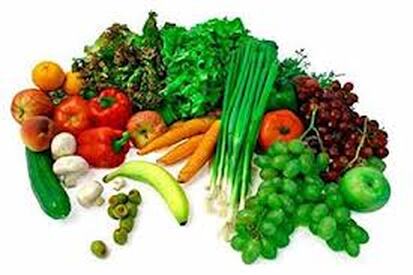
An alkaline diet emphasizes alkaline foods such as whole fruits and vegetables and certain whole grains, which are low in caloric density. Healthy Alkaline Diet Foods involve the ideal balance between acidifying and alkalizing foods. The body includes a number of organ systems that are adept at neutralizing and eliminating excess acid, but there is a limit to how much acid even a healthy body can cope with effectively. The body is capable of maintaining an acid-alkaline balance provided that the organs are functioning properly, that a well-balanced alkaline diet is being consumed, and that other acid-producing factors, such as tobacco use, are avoided. Acidity or alkalinity of a liquid is measured using the pH scale.
The aim of the alkaline food diet is to balance blood acidity or alkalinity level in the body. Eating a diet of 70% alkaline-producing foods and 30% acid-producing foods daily is the diet plan this also aids weight loss and can help control chronic conditions and diseases like diabetes, arthritis and cancer, as well as slowing the aging process. In addition ‘Alkaline water’ has been a recent addition to the dietary recommendations, either bought as a drink, or a machine to generate alkalinised water.
The aim of the alkaline food diet is to balance blood acidity or alkalinity level in the body. Eating a diet of 70% alkaline-producing foods and 30% acid-producing foods daily is the diet plan this also aids weight loss and can help control chronic conditions and diseases like diabetes, arthritis and cancer, as well as slowing the aging process. In addition ‘Alkaline water’ has been a recent addition to the dietary recommendations, either bought as a drink, or a machine to generate alkalinised water.
The ph balance
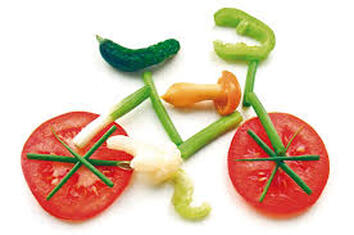
This scale has a range from a pH of 1 (which is extremely acidic) to a pH of 14 (extremely alkaline). Water has a pH of around 7, which is neutral pH, neither acid nor alkaline. In contrast our stomach acid has an extremely acidic pH of 1-3, essential to help us digest food. The pH of blood is carefully controlled within a very narrow range of pH 7.35-7.45, which keeps blood slightly alkaline. It’s incredibly important to maintain this tight pH range as millions of cell reactions taking place in our body each day work best in a slightly alkaline environment. Blood pH naturally varies over the course of the day, but will always fall within this range. To maintain blood pH requires exquisitely sensitive monitoring and adjustment by our body. The key organs adjusting blood pH are the kidneys, which rid the blood of excess acid or alkali into the urine. For this reason the pH of urine can vary much more (usually between a pH of 4.5 to 8). Breathing rate can also be adjusted - without us even realising it - to regulate carbon dioxide levels in our blood which can also adjust pH levels. In addition, our bones can release calcium to help ‘buffer’ an acidic blood, but this is undesirable as long term bone calcium loss can increase the risk of osteoporosis. Severe kidney or lung disease, or uncontrolled diabetes can cause blood pH to fall outside this range.
Seasonal diet
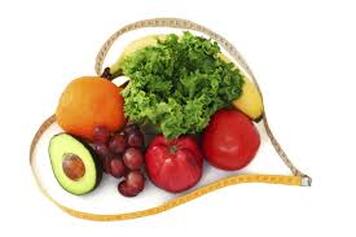
Seasonality of food refers to the times of year when a given type food is at its peak, either in terms of harvest or its flavour. This is usually the time when the item is the cheapest and the freshest on the market. The food's peak time in terms of harvest usually coincides with when its flavour is at its best.
In spring, focus on tender, leafy vegetables that represent the fresh new growth of this season. The greening that occurs in springtime should be represented by greens on your plate, including Swiss chard, spinach, Romaine lettuce, fresh parsley, and basil.
In summer, stick with light, cooling foods in the tradition of traditional Chinese medicine. These foods include fruits like strawberries, apple, pear, and plum; vegetables like summer squash, broccoli, cauliflower, and corn; and spices and seasonings like peppermint and cilantro.
In autumn, turn toward the more warming, autumn harvest foods, including carrot, sweet potato, onions, and garlic. Also emphasize the more warming spices and seasonings including ginger, peppercorns, and mustard seeds.
In winter, turn even more exclusively toward warming foods. Remember the principle that foods taking longer to grow are generally more warming than foods that grow quickly. All of the animal foods fall into the warming category including fish, chicken, beef, and lamb. So do most of the root vegetables, including carrot, potato, onions and garlic. Eggs also fit in here, as do corn and nuts.
In all seasons, be creative! Let the natural backdrop of spring, summer, fall and winter be your guide.
In spring, focus on tender, leafy vegetables that represent the fresh new growth of this season. The greening that occurs in springtime should be represented by greens on your plate, including Swiss chard, spinach, Romaine lettuce, fresh parsley, and basil.
In summer, stick with light, cooling foods in the tradition of traditional Chinese medicine. These foods include fruits like strawberries, apple, pear, and plum; vegetables like summer squash, broccoli, cauliflower, and corn; and spices and seasonings like peppermint and cilantro.
In autumn, turn toward the more warming, autumn harvest foods, including carrot, sweet potato, onions, and garlic. Also emphasize the more warming spices and seasonings including ginger, peppercorns, and mustard seeds.
In winter, turn even more exclusively toward warming foods. Remember the principle that foods taking longer to grow are generally more warming than foods that grow quickly. All of the animal foods fall into the warming category including fish, chicken, beef, and lamb. So do most of the root vegetables, including carrot, potato, onions and garlic. Eggs also fit in here, as do corn and nuts.
In all seasons, be creative! Let the natural backdrop of spring, summer, fall and winter be your guide.
Raw Food
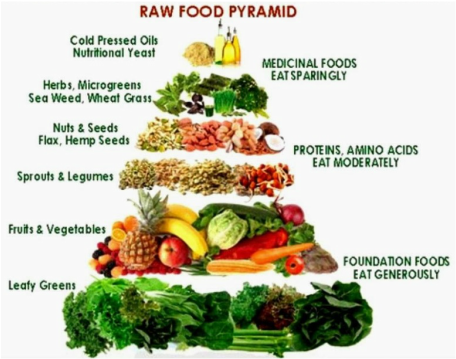
1. Raw foods are better quality, therefore you eat less to satisfy your nutritional needs. The heat of cooking depletes vitamins, damages proteins and fats, and destroys enzymes which benefit digestion. As your percentage of raw foods increases you feel satisfied and have more energy on smaller meals because raw food has the best balance of water, nutrients, and fibre to meet your body’s needs.
2. Raw foods have more flavor than cooked foods so there is no need to add salt, sugar, spices, or other condiments that can irritate your digestion system or over stimulate other organs.
3. Raw foods take very little preparation so you spend less time in the kitchen. Even a child of 5 or 6 can prepare most items for breakfast, lunch or dinner. This gives children a sense of self-esteem and independence, not to mention the break it gives Mom or Dad.
4. When you are eating raw there’s little chance of burns, unless you’re in the middle of a forest fire or out in the sun too long. Just think! No burns to tongues, the roof of your mouth, or fingers, and many fewer house fires.
5. Cleaning up after a raw meal is a snap. No baked-on oils or crusty messes. And any inedible parts go directly to the compost pile.
2. Raw foods have more flavor than cooked foods so there is no need to add salt, sugar, spices, or other condiments that can irritate your digestion system or over stimulate other organs.
3. Raw foods take very little preparation so you spend less time in the kitchen. Even a child of 5 or 6 can prepare most items for breakfast, lunch or dinner. This gives children a sense of self-esteem and independence, not to mention the break it gives Mom or Dad.
4. When you are eating raw there’s little chance of burns, unless you’re in the middle of a forest fire or out in the sun too long. Just think! No burns to tongues, the roof of your mouth, or fingers, and many fewer house fires.
5. Cleaning up after a raw meal is a snap. No baked-on oils or crusty messes. And any inedible parts go directly to the compost pile.

6. Eating a diet of raw foods can reverse or stop the advance of many chronic diseases, including heart disease and cancer. Remember, cooking creates free radicals, which are the major cause of cancer. When you lower the number of free radicals your cells are bombarded with, you lower your risk of cancer.
7. A raw food diet can protect you from acute diseases such as colds, flu, measles, etc. Raw foods maintain a healthy body and a healthy body will not become diseased.
8. As long as you combine raw food properly according to the rules of Natural Hygiene, you will soon reach a level where you no longer suffer from heartburn, gas, indigestion or constipation.
9. It is environmentally sound. With humanity on a diet of raw foods, the food industry would close up shop and take up organic gardening. This would save us enormous amounts of natural resources used to produce power for these industries. Nuclear power would be clearly unnecessary. And think of how many trees and oil reserves could be saved without the need for the paper and plastics used in packaging our processed foods. There would also be less carbon dioxide released in to the atmosphere when all the cooking stopped and more oxygen produced from all the new orchards and gardens, thus helping to reverse the Greenhouse Effect.
10. Eating raw saves you money on food, vitamins, pots and pans, appliances, doctor bills, drugs, and health insurance.
So don’t waste your food, yourself, and our planet by cooking what you eat. Fruits, nuts, and vegetables which are whole, fresh and raw are brimming with life and have the ability to transmit their life force directly to you.
7. A raw food diet can protect you from acute diseases such as colds, flu, measles, etc. Raw foods maintain a healthy body and a healthy body will not become diseased.
8. As long as you combine raw food properly according to the rules of Natural Hygiene, you will soon reach a level where you no longer suffer from heartburn, gas, indigestion or constipation.
9. It is environmentally sound. With humanity on a diet of raw foods, the food industry would close up shop and take up organic gardening. This would save us enormous amounts of natural resources used to produce power for these industries. Nuclear power would be clearly unnecessary. And think of how many trees and oil reserves could be saved without the need for the paper and plastics used in packaging our processed foods. There would also be less carbon dioxide released in to the atmosphere when all the cooking stopped and more oxygen produced from all the new orchards and gardens, thus helping to reverse the Greenhouse Effect.
10. Eating raw saves you money on food, vitamins, pots and pans, appliances, doctor bills, drugs, and health insurance.
So don’t waste your food, yourself, and our planet by cooking what you eat. Fruits, nuts, and vegetables which are whole, fresh and raw are brimming with life and have the ability to transmit their life force directly to you.
Juicing
|
Juicing offers many life-enhancing health benefits including a faster, more efficient way to absorb immune boosting nutrients naturally found in fruits and vegetables. It provides a way to access digestive enzymes typically locked away in the fiber matrix of whole fruits and vegetables. Most commercial juices are processed and lacking in nutrition while freshly juiced fruits and vegetables are loaded with an abundance of vitamins, minerals and phytonutrients.
|
|
Drinking fresh juice can help us adopt healthier eating patterns. For those of us who do not traditionally consume many fruits and vegetables, incorporating fresh juice can be a fun and different approach to increasing consumption of these important plant foods for improved health and wellness and reaching your weight loss goals.
Juicing removes the insoluble fiber from vegetables and fruits. While fiber is an established, important part of an overall healthy diet, removing the insoluble fiber allows for increased absorption of specific health promoting phytonutrients including enzymes, while the soluble fiber persists into the juice. By removing the fibers and consuming fruits and vegetables in liquid form, we are providing a nutrient delivery system to our bodies that allows individuals who would otherwise have difficulty consuming whole vegetables, the opportunity to reap the numerous benefits vegetables have to offer. |
The power of Mint |
The power of water
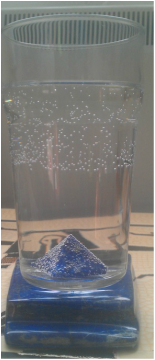
Getting enough water every day is important for your health. Meeting your fluid needs is simple drink water when your thirsty and drinking before or after meals as we get some fluids through the foods that you eat. There are many different types of water on sell bottled water, flavoured water, vitamin water. The best source for drinking and cooking, are through the use of water filters such as magnetic filters, reverse osmosis systems, simple filters. Different type of filters produce different. Any other form of regular water, tap or bottled, is still better than a soda. Vitamin and specialty waters can become a problem due to added sugars. Others promise extra vitamins when in fact they contain very few. In truth, water doesn't need to provide anything other than water. It's important enough.
|
Log on to the site and order your health produces put JUSTIN PAUL as the contact.
|




